Aircraft air conditioning system health state estimation and prediction for predictive maintenance
Jianzhong SUN, Fangyuan WANG, Shungang NING
Department of Civil Aviation, Nanjing University of Aeronautics and Astronautics, Nanjing 210016, China
KEYWORDS Aircraft air conditioning system;Bayesian method;Failure prognostics;Health index;Predictive maintenance
Abstract The vast potential of system health monitoring and condition based maintenance on modern commercial aircraft is being realized through the innovative use of Airplane Condition Monitoring System (ACMS) data. However there are few methods addressing the issues of failure prognostics and predictive maintenance for commercial aircraft Air Conditioning System (ACS).This study developed a Bayesian failure prognostics approach using ACMS data for predictive maintenance of ACS. First, a health index characterizing the ACS health state is inferred from a multiple sensor signals using a data driven method. Then a dynamic linear model is proposed to describe the degradation process for failure prognostics. Bayesian inference formulas are carried out for degradation estimation and prediction. The developed approach is applied on a passenger aircraft fleet with ACMS data recorded for one year.The analysis of the case study shows that the developed method can produce satisfactory prognostics results, where all the ACS failure precursors are identified in advance,and the relative errors for the failure time prediction made when just entering the degradation warning stage are less than 8%.This would allow operators to proactively plan future maintenance.
1. Introduction
Modern commercial aircraft systems,such as the power plants,air conditioning system, consisting of a large number of subsystems and components interacting with each other, must operate safely and economically throughout their entire life cycle. A Health Monitoring and Condition Based Maintenance (HM-CBM) policy can help to improve reliability,safety, and availability, while reducing the life-cycle operational costs. The HM-CBM system usually consists of data acquisition and processing, health monitoring, fault diagnostic, failure prognostics and decision support. Prognostic typically focuses on predicting the Remaining Useful Life (RUL)of the system for the purpose of the optimal maintenance decisions.Failure prognostics can be handled by a various of techniques ranging from statistical methods to artificial intelligence techniques.In general,most of the prognostic methods can be divided into the physics-based models and data-driven approaches.1Most failure mechanisms in real life can be traced to a potential chemical or physical degradation process. However, in many HM-CBM practices, measuring of the system degradation state directly is extremely difficult,or even impossible.In most cases,the multiple sensor signals are collected to describe the degradation process.2After that, data-driven models can be developed for system health monitoring and failure prognostics based on the observed data.3-5
For the airline operators, the aircraft health monitoring and prognostics provide the opportunity to identify failure precursors and perform proactive maintenance in advance to reduce unscheduled in-service interruptions.6,7Modern commercial aircrafts are typically equipped with Airplane Condition Monitoring System (ACMS), which connects with a large number of sensors and detectors distributed over the aircraft. During the flight of the aircraft, a wide range of flight data covering various airborne systems,such as the system performance data, environmental and load parameters, are collected and recorded by the ACMS, which can be used for system and component health monitoring and failure prognostics.8Therefore, how to effectively analyze available airplane ACMS and maintenance data and turn it into useful information for engineering and maintenance decision is one of the research focuses currently.The vast potential of system health monitoring and condition based maintenance on modern commercial aircraft is being realized through the innovative use of available ACMS data.8,9
It is not easy to develop an effective health monitoring and prognostics solutions for large and complex systems of modern commercial aircraft,which typically consist of networked subsystems that are closely interconnected through various electrical, mechanical, hydraulic or pneumatic connections along with feedback control loops. The aircraft Air Conditioning System (ACS) is one of such airborne systems that controls the interior environment of the airplane for flight crew,passengers,and equipment.Algarni et al studied the reliability of the air conditioning system based on the field data of a particular type of commercial aircraft under actual usage and environmental stresses.10The study shows the ACS of the aircraft operating in harsh atmospheric conditions and sandy areas experiences a higher failure rate than that estimated by the manufacturer. Dirt contaminations such as the particulate,dust and sand in atmospheric are identified as the primary cause of the failures for the ACS.10Wright et al. addressed the failures of the ACS due to fouling, identified the potential sources of fouling and operational measures that may effect this safety critical systems operation.11Their study show that the ‘‘ram” air cooling within the ACS encourages the deposition of Particulate Matter(PM)on the plate fin heat exchangers surfaces and the range of aerosol particles is from ultrafine(1 nm) to larger PM10 (10 μm). ACS’s failure not only affects the flight safety of the aircraft but also may affect the dispatch of aircraft, causing flight delays or even cancellation. Therefore, it is critical to develop a reliable health monitoring and failure prognostics methodology for the ACS that can provide early warnings of impending fault and predict its failure time to enable condition based maintenance. Traditional methods typically use model-based and data-driven approaches for system health monitoring and failure prognostics.Data driven approaches use sensor data collected from a real system to develop health monitoring strategies,while model-based methods utilize simplified mathematical or physical models to characterize the healthy behaviors of system or component under varying operating conditions for anomaly detection and fault diagnosis. Shang and Liu developed a model-based method for heat exchanger fouling detection by assessing the deviation of the nominal bypass valve position with the real system’s position.12They further proposed an Unscented Kalman filter based method for both sensor and actuator faults detection and isolation in aircraft bleed system.13Hare et al. proposed a system-level hierarchical fault detection and isolation method for ACS of an aircraft,14which is further tested on a data set generated from a validated ACS simulation model provided by industry partner. The presented results show that the developed method is able to improve the fault classification rate while reducing the false alarms.11
Data driven methods such as support vector regression,neural networks, principal component analysis, and k-nearest neighbor method have been used for air conditioning systems fault detection,14,15heat exchanger fouling monitoring,16-18respectively. Silva et al. proposed a wavelet-based method for ACS heat exchanger fouling severity diagnosis, where the wavelet analysis is used for signal denoising and feature extraction to improve the correct classification rate.19Najjar et al.presented a data-driven method for heat exchanger fouling severity assessment using the principal component analysis and the k-nearest neighbor classification, where they use the PCA for feature extraction and data reduction, and the SVM and k-NN for data classification.20,21Further, they proposed an optimal sensor selection methodology to select the most useful sensors that can provide the best fouling diagnosis results for the heat exchanger.20Fellague et al.reviewed methods for ACS heat exchangers health monitoring and diagnosis,and the heat exchanger effectiveness and Number of Transfer Unit (NTU) based methods are proposed and demonstrated using analytical and computational tools.22Most of the above studies focus on ACS fault detection and isolation,yet,do not address the issues of failure prognostics and predictive maintenance.
In this paper, a data-driven prognostics method based on degradation estimation and prediction is explored. One challenge is that there is no clear and specific physical quantity to characterize the degradation of the complex air conditioning system. Instead, we have to resort to the performance data available on legacy aircraft to define a virtual Health Index (HI) to characterize the ACS health state. A linear degradation model is used to characterize the underlying degradation process of the ACS, for which only small number of performance parameters are available. Given the computed HI, Bayesian estimation method is used to for system health state estimation and prediction. The following are the arrangements for rest of this paper. Section 2 presents the ACS health index calculation method. Then a linear degradation model and associated Bayesian inference method is presented in Section 3. Section 4 gives a case study of the method applied to ACS of a single-aisle passenger aircraft under actual usage and environment conditions. Finally,conclusions are drawn in Section 5.
2. Health index for aircraft air conditioning system
2.1. Aircraft condition monitoring system
The commercial aircraft air conditioning system is an important system that is used to control the interior environment of the airplane for flight crew, passengers, and equipment. It is a complex networked system consisting of multiple interconnected sub-systems, components, sensing and action devices,and feedback control loops.The system consists of the following main sub-systems, temperature control, distribution, pressurization, equipment cooling, heating, and cooling. The cooling sub-systems removes water as necessary and controls the quantity and temperature of the fresh air from the pneumatic system before it goes into the air distribution part.Fig. 1 shows the system diagram of the main cooling system components: Flow Control ShutOff Valve (FCSOV), air cycle machine, heat exchanger, ram air system and water separator.
The FCSOV controls the hot bleed air from the pneumatic system into the pack.The bleed air firstly goes through the primary heat exchanger,where the heat is removed using the outside ambient ram air controlled by the ram air system. Then the cooled bleed air goes to the compressor section of the Air Cycle Machine (ACM). The ACM is a three-wheel air bearing air cycle machine, where the air gets compressed and thus heated.The compressed air then goes to a secondary heat exchanger for additional cooling and through a water extractor duct back to the air cycle machine. The water separator collects and removes moisture from the air before it goes into the distribution system.The bleed air is then flows into the turbine of ACM and rapidly expands and cooled. The cold air is then combined with hot air in the mixing chamber, which is then distributed to the air distribution sub-system at the desired cabin supply temperature. ACS is equipped with built-in sensors used to control the ACS to produce the desired temperature,however only limited sensor data such as the duct air temperature and pressure is recorded in the airplane ACMS,which can be further analyzed for system health monitoring or fault diagnosis. The ACS consists of multiple interconnected sub-system and components with complex feedback control loops and safety mechanisms, which have a redundancy and compensation mechanism for performance degradation or single fault. Therefore simple analysis of the limited ACS sensor data may not be sufficient for a complete health monitoring solution. In this study, other contextual parameters characterizing the ACS operating conditions such as the atmospheric conditions, airplane flight altitude and Mach are also considered for further analysis in depth. For the ACS studied in this study, based on a signal correlation analysis and the expert experience, an initial subset of signals for the studied commercial aircraft ACS health monitoring is proposed (listed in Table 1).
2.2. Health index of ACS
For ACS health monitoring, firstly a specific ACMS report is defined to extract sensor data (listed in Table 1) under certain system function mode or flight conditions, which can be used for system performance characterization or fault detection.In this study,the ACS report is automatically generated during the takeoff or initial climbing flight phase for each flight,based on which the health index for the ACS is computed.
Fig.2 shows two sensor parameters,i.e.,the Ram Air Temperature (RAMT) and Mix Manifold Temperature (MFDT),which are from the ACS reports of 600 flights. A significant fluctuation is observed in the temperature data although there is no evident fault during this period. It should be noted that the complex system behavior as well as the recorded sensor data are influenced by many factors,such as the airplane flight conditions,system configuration and function mode as well as the system health state. For example, in Fig. 2 the obvious increase trend in the RAMT parameters can be mostly attributed to the increase of the outside ambient temperature,which is used to cool the hot bleed air flows by the ram air system during takeoff flight phase.One challenge for system-level failure prognostics,e.g.,the aircraft air conditioning system of our interest in this paper, is that there is no explicit parameter or signal to represent the health state at system level. Typically,we have to resort to multiple sensor signals to derive a virtual HI that may be able to characterize the health state of a system. System failure is then indicated by a failure threshold in terms of the HI at which the system no longer meets its required specifications or cannot be expected to perform for an appreciable amount of time.1Therefore, to capture the ACS health state under various operating conditions, in this study a non-parametric modeling technique, i.e., Multivariate State Estimation Technique(MSET),23-25is adopted to derive the ACS health index from the raw ACMS report data,which is highly associated to the system real health state.
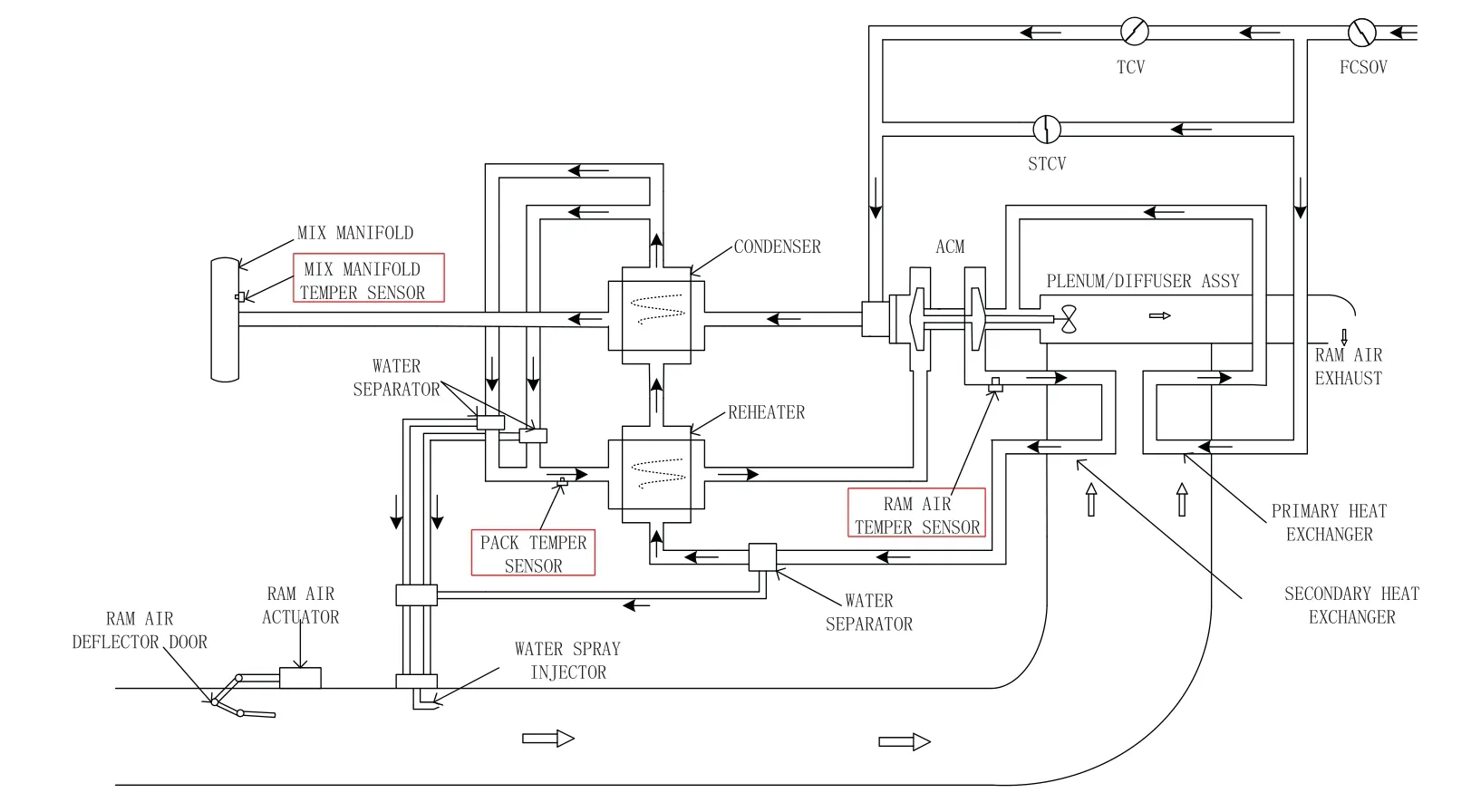
Fig. 1 Schematic drawing of air conditioning systems.
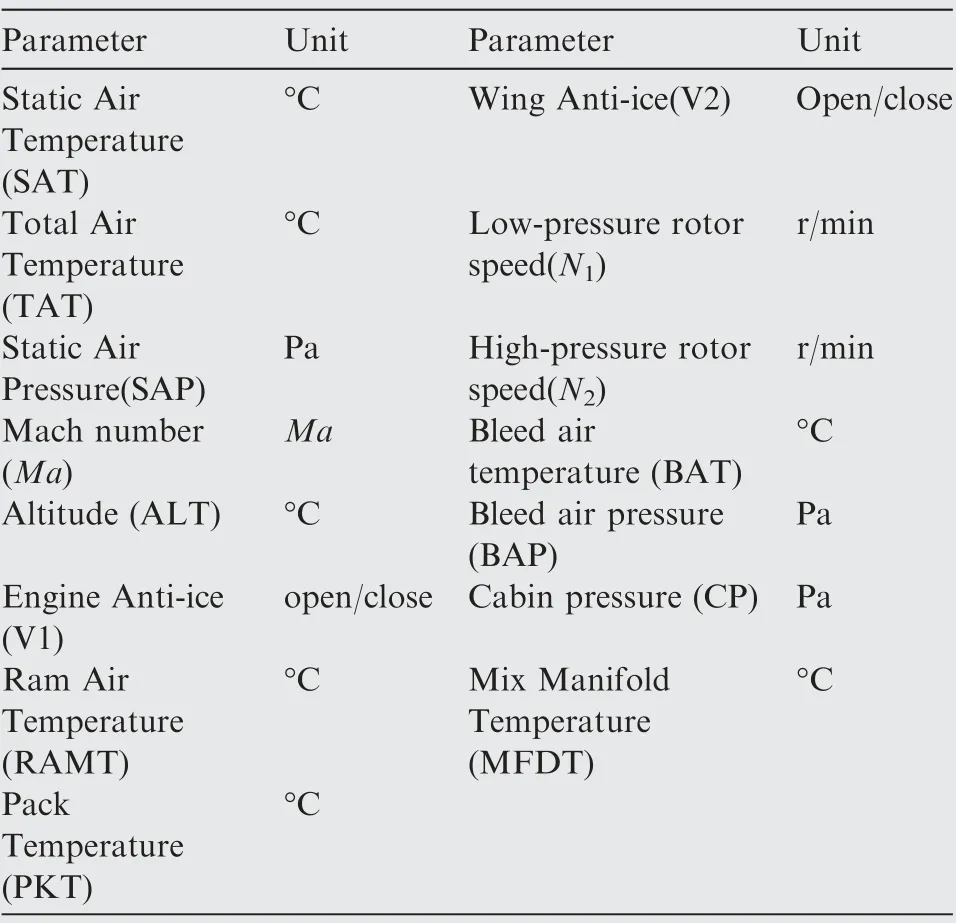
Table 1 Sensor parameters for ACS health monitoring.
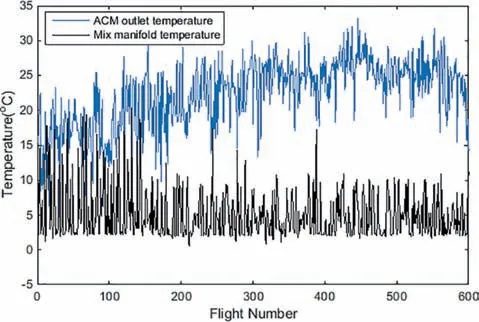
Fig. 2 Temperatures data from ACS health monitoring reports.

MSET is a non-parametric modeling technology,which can achieve the state estimation by measuring the similarity among multiple monitored variables in the normal operating range.The proposed ACS health index is the residual of RAMT between the measured value and its estimation based on MSET method.where RAMTmeasuredis the measured ram air temperature,and RAMTestimatedis the estimated ram air temperature using the MEST method. For the computation of Toutlet,estimated, a memory matrix D is selected consisting of many healthy historic sample states, characterizing the ACS behavior of the aircraft in a health condition:


where W is a weight vector,which represents a similarity measure between each state in matrix D and the observation state.W is derived from the least square error estimation method as the following.

where the symbol ⊗means a non-linear similarity operator,such as the Gaussian kernel operator.25
The computed ACS health indices from two aircrafts are presented in Fig. 3. The left plot (Fig. 3 (a)) shows the health index evolution of both ACSs of one aircraft during one year,which experienced a gradual degradation and a performance improvement due to maintenance (Aircraft C). The right plot(Fig. 3 (b)) shows the ACS health index evolution of one aircraft without any ACS faults (Aircraft E). It can be deduced that the proposed health index is closely related to the ACS latent degradation state. Given the health index derived from the raw ACS report, it is possible to predict the failure time of the ACS using a prognostic algorithm,which can then allow the maintenance personnel to plan maintenance in advance.
3. Linear degradation model and Bayesian inference
3.1. Linear degradation model
In this study,a Dynamic Linear Model(DLM)was adopted to describe the ACS degradation process for prognostic.23DLM is a particular linear State Space Model(SSM),with Gaussian noise and time-varying degradation rate:26

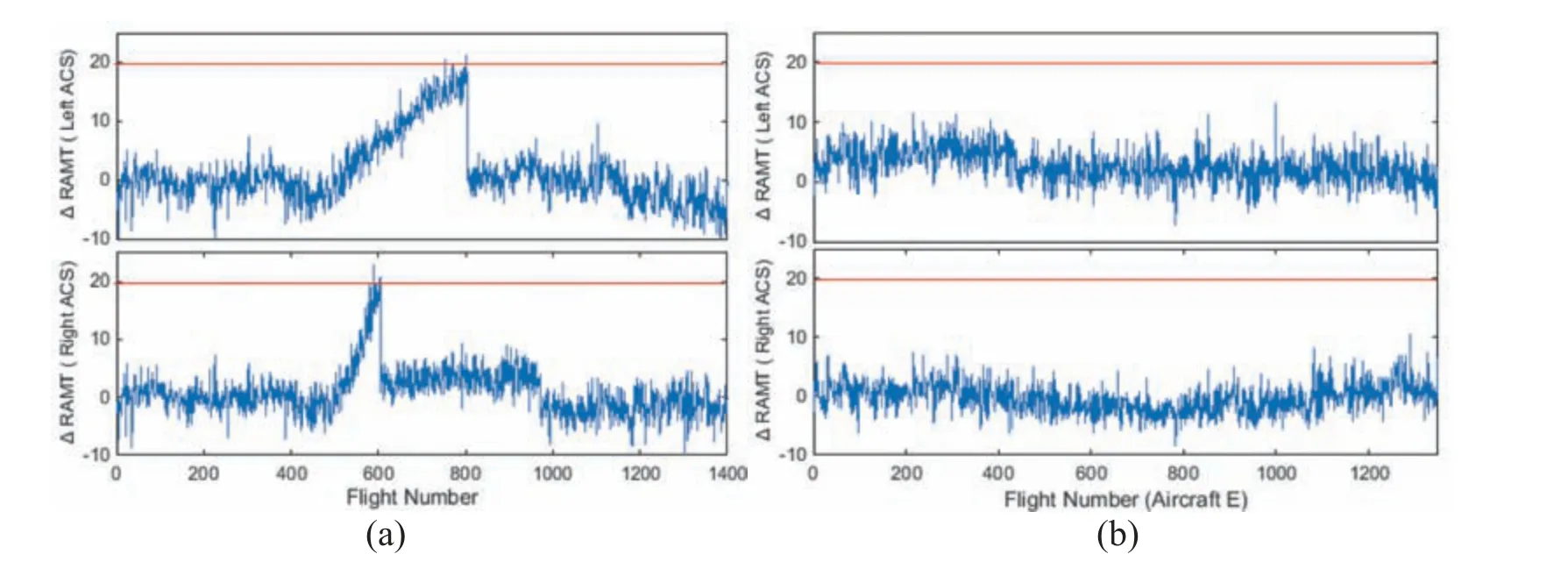
Fig. 3 ACS health index evolution of Aircraft C and E.

Fig. 4 ACS health state estimation based on measured health index.
where μtrepresents the hidden degradation state,and βtrepresents the degradation rate. The potential degradation state is characterized by the noisy health index yt.Eq.(2)is the observation equation,while Eqs.(3)and(4)constitute the equation of current state.
where μtis interpreted as the hidden degradation state and βtis the degradation rate. The latent degradation state was indirectly measured through the noisy parameter residual yt.To estimate the degradation rate, some dynamics were introduced into βtthrough wβ,t.This was a special case of the linear state space model with time-varying degradation rate βtfor the dynamics of the degradation level μt.Eq.(2)is the observation equation, while Eqs. (3) and (4) constitute the state equation.Here we assumed that the degradation process had Gaussian noise, i.e., wμ,t~N(0,Wμ) and wβ,t~N(0,Wβ). The observations were also assumed to be contaminated with Gaussian noise ( vt~N(0,V)). In this model, the state vector was Xt= [μt,βt]T, where μtwas interpreted as the level of actual degradation and βtas the degradation growth rate.The model supposed that the state changed linearly with time and that the degradation rate also changed accordingly.Therefore,DLM is flexible and fit for characterizing the evolution of the system health state. At the beginning, there was little or no degradation and the degradation rate was near zero, so the linear growth model degraded into a simple random walking model.When the failure was imminent,the degradation rate rose to a certain level, and the system degraded with a constant rate.
The DLM model can be converted more formally to a SSM:27

3.2. Degradation estimation and prediction
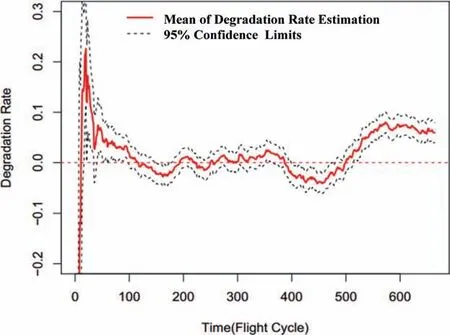
Fig 5 Degradation rate estimation based on measured health index.
In view of the DLM degradation model and the noisy health index measurements, the optimal estimation and prediction of the degradation state can be obtained in a Bayesian framework. For a linear SSM with Gaussian noise, a closed form solution can be obtained as the follows.27
Let xt-1|y1:t-1~N(mt-1,Ct-1), then the state estimation at time t is given by

where
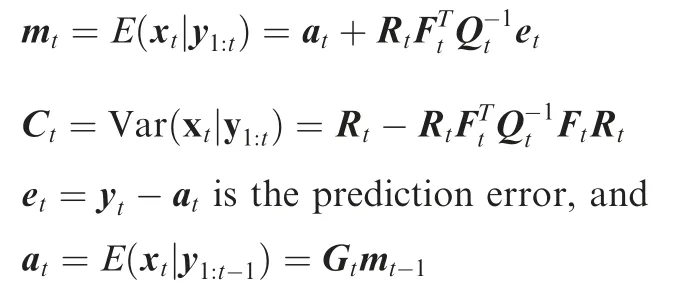

Eq.(6) put forward a basic state estimation mechanism for the model in Eq.(5),where all the parameters are known. But in actual use only rarely are the covariance matrices Wtand Vtcompletely known. Therefore, a fundamental problem was estimating Wtand Vtjointly with the underlying state. For some simple situations,just like the Gaussian linear case in this research, by introducing a discount factor, Bayesian inference can still be carried out in closed form using conjugate priors.27
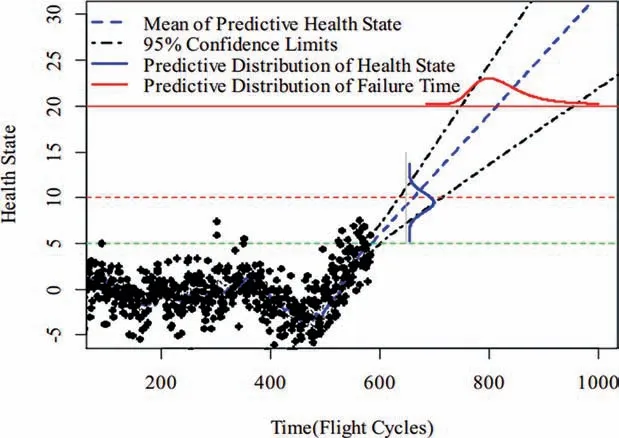
Fig. 6 Failure time prediction for left ACS of Aircraft C (at 584th flight cycle).
Assume that at time t we have got the state estimation results derived from p(μt|y1:t)=N(mt,Ct) and p(βt|y1:t)=N(β,Vβ), respectively, for degradation state and degradation rate.Then k-steps-ahead prediction is still a Gaussian distribution, xt+k~N(at+k,Rt+k), where the mean and variance are given by the equations as follows. For k ≥1:

As new data arrived, the state estimation and prediction were recursively updated. Taking into account the statistical nature of the Bayesian method, the degradation prediction was given in a distribution form. If the failure is defined according to a predetermined degree of degradation, the failure time distribution can be estimated from the predictive degradation distribution.
3.3. Failure time prediction
We supposed that the failure happened when the degradation level,xt,reached the pre-defined threshold xFfor the first time,i.e., xt≥xF. Let FT(t) denote the cumulative failure distribution at time t. After that, for an upper-bounded monotonic degradation process, the cumulative failure distribution function can be described as follows:

where T is the lifetime, f(xt) is the predictive degradation distribution at time t, and xFis the failure threshold. In particular, it should be noted that due to the Gaussian process noise assumption there is very little error between Pr T ≤[t ] and Pr[xt≥xF]. But in the degradation stage we were interested in, the error can be reduced and so that it can be ignored,and Eq. (9) can be considered valid. In this paper we use^FT(t) to express the estimation of FT(t):

4. Case study
The prognostics method proposed above was demonstrated based on a field dataset collected from 5 aircrafts during one year. The failure threshold in this research was determined based on the run-to-failure data samples. Upon this, when the soft failure threshold came to the health index, it was set at Level 20.This was supported by the fact that five ACSs were maintained near this threshold due to performance degradation, and none of the fault free ACSs passed through this threshold(shown in Fig.3).Then degradation state estimation and failure prognostics was carried out based on the calculated health index using the approach proposed in part III.
4.1. Health state estimation
To illustrate the proposed method,the left ACS of Aircraft C,which is withstood gradual deterioration in service and repaired at the 806th flight cycle, is considered. Given a DLM degradation model and the ACS ACMS reports till the current time, the ACS health state can be estimated using the method introduced in Section 3 based on the noisy health index, which is derived from the raw sensor readings. Fig. 4 revealed the ACS estimation results of health state based on the up-to-data health index. The green and red dashed lines in Fig. 4 represent advisory and warning levels in terms of the ACS degradation state respectively. At the meantime, the degradation rate is obtained, which captures the feature of the degradation process of the ACS under the real environmental and operating conditions. Fig. 4 revealed the estimation results of degradation rate based on health index up to different time, the 584th and 684th flight cycles respectively.It can be observed from Fig. 4 that the ACS health state first evolved like random fluctuations (no obvious trend), meaning that there was little or no degradation in its early stages of lifetime, which is further confirmed by the near zero degradation rate presented in Fig. 5. This was then followed by a gradual degradation with none zeros degradation rates as it approached the end of life. Because of the statistical nature of the Bayesian method used in this research, all estimation results are presented in distribution forms.
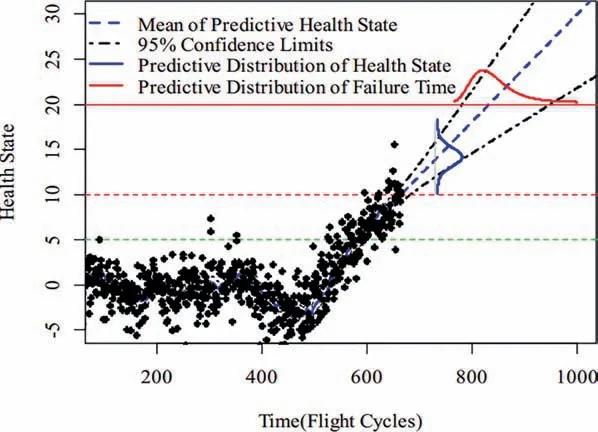
Fig. 7 Failure time prediction for left ACS of Aircraft C (at 664th flight cycle).
4.2. ACS failure time prediction
According to the estimation results,the degradation prediction is applied for failure prognostics. The predicted degradation process in a distribution form is expressed by the mean (the dashed line)and with uncertainty limits(95%confidence limits showed by dot-dashed lines)in Figs.6 and 7.The black points in Figs. 6 and 7 represent the computed His based on the ACMS reports. As mentioned above, because of the linear SSM assumption, the predictive distribution of the residuals is still a Gaussian distribution. The predictive distributions of the health state at 70 flight cycles ahead of current time,are plotted in Figs. 6 and 7 respectively.
Given the health state prediction and the pre-defined failure threshold, the distribution for failure time can be obtained on the basis of Eq. (10). The predicted failure time distributions for the left ACS of Aircraft C at different time, i.e., at 584th flight cycle and the 664th flight cycle, are presented in Figs. 6 and 7 respectively. The prediction was launched depended on all the latest monitoring data at the current moment. Once the new data come, the predicted failure time will be accordingly changed.
The prognostics results with uncertainty limits for all ACS made at different stages are summarized in Table 2. Prognostics results in Table 2 involve the mean and 95% confidence limits of the failure time prognostication made at both the advisory and warning state, when the degradation level exceeds 5 and 10 respectively.As the end of life is approached,the predicted failure time becomes closer to the actual failure time, and the prediction uncertainty decreases at the same time. Particularly, when entering the degradation warning stage,i.e.,the degradation exceeds level 10,the relative prediction errors are less than 8%. This would allow operators to proactively plan predictive maintenance, thereby reducing unscheduled in-service interruptions and producing substantial savings in operational costs.
5. Conclusion
Health Monitoring and Condition Based Maintenance (HMCBM)has become a key tool to enable proactive management of maintenance for modern commercial aircraft.A wide range of flight data covering various airborne systems recorded in the Airplane Condition Monitoring System(ACMS)provides vast potential for aircraft health monitoring and failure prognostics. Derived diagnostic and prognostic information from the ACMS data can provide maintenance personnel the ability to schedule removals and plan maintenance in advance, thus reducing unscheduled in-service interruptions. Therefore how to effectively analyze the ACMS and maintenance data and turn them into useful information for engineering and maintenance decision is one of the research focuses currently.
In this study,for predictive maintenance of aircraft air conditioning system(ACS),a Bayesian failure prognostics method based on ACMS data was developed and demonstrated.Firstly,a specific ACMS report is defined extracting flight data snapshot under certain flight conditions to characterize the ACS performance,based which a Health Index(HI)characterizing the health state of the ACS is derived. Then a dynamic linear degradation model is used to describe the ACS degradation process, which is estimated and predicted in a Bayesian framework. The statistical nature of the Bayesian approach will inevitably lead to uncertainty bounds prognostics results based on its distribution. Along with more ACMS reports become available, the prediction outcomes can be updated on-line, and this is especially true as the life cycle approaches.The main contribution of the study is the establishment of an integrated failure prognostics method for predictive maintenance of commercial aircraft ACS, which is further verified on a real data set from a legacy commercial aircraft fleet during one year. Typically, one challenge for the aircraft system prognostics is that there is no explicit parameter or signal to represent the health state of the system. An HI inferred from multiple sensor readings is used to characterize the health state of a system. The presented results show that the developed method can produce satisfactory prognostics results. All the ACS failure precursors are identified and warned in advance based on the system HI, and the relative errors for the failure time prediction made when just entering the degradation warning stage are less than 8%. This would allow operators to proactively plan predictive maintenance to reducing unscheduled in-service interruptions and producing substantial savings in operational costs.In the next study,the proposed approach will be applied to a medium and short range commercial aircraft fleet for optimum air conditioning system maintenance planning.
Acknowledgments
This work was supported by National Natural Science Foundation of China (91860139) and China Postdoctoral Science Foundation (2015M581792).
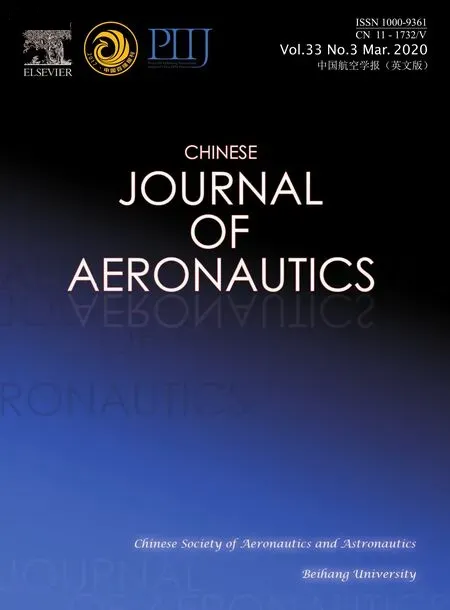 CHINESE JOURNAL OF AERONAUTICS2020年3期
CHINESE JOURNAL OF AERONAUTICS2020年3期
- CHINESE JOURNAL OF AERONAUTICS的其它文章
- Experimental investigation on operating behaviors of loop heat pipe with thermoelectric cooler under acceleration conditions
- Investigation of hot jet on active control of oblique detonation waves
- Experimental study of rotor blades vibration and noise in multistage high pressure compressor and their relevance
- Unsteady wakes-secondary flow interactions in a high-lift low-pressure turbine cascade
- Effect of protrusion amount on gas ingestion of radial rim seal
- Optimization design of chiral hexagonal honeycombs with prescribed elastic properties under large deformation
